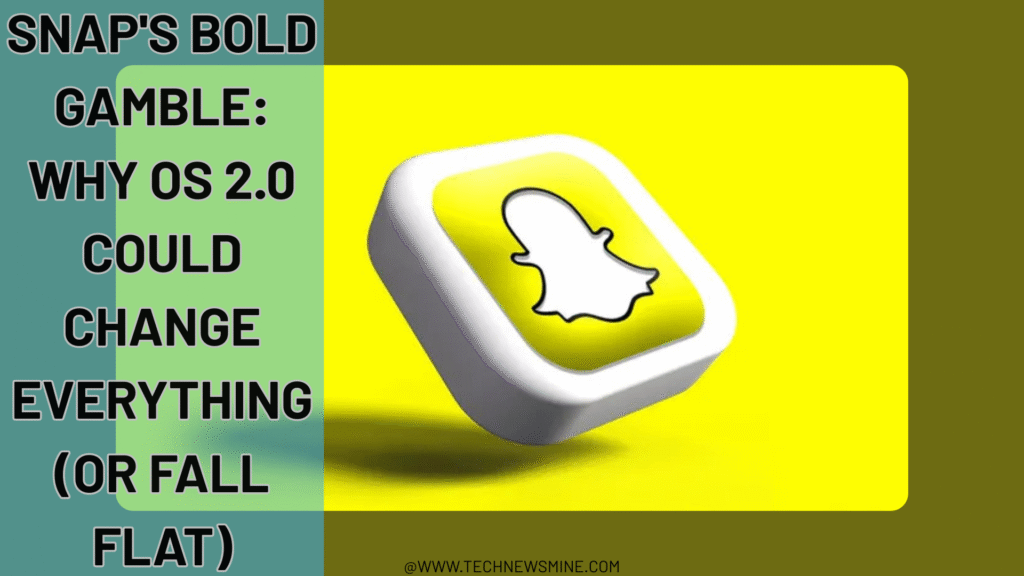Remember when smartphones first came out and everyone said, “Who needs the internet on a phone?” Well, Snap just dropped something that might make us eat our words again. They’ve unveiled Snap OS 2.0, and honestly? It’s either brilliant or completely bonkers.
Here’s what caught my attention: Snap isn’t just updating their camera app anymore. They’re building an entire operating system that lives inside your glasses, complete with a native browser and something called WebXR support. But here’s the million-dollar question – are we actually ready for this?

The Browser That Lives on Your Face
Let’s talk about that native browser first, because this is where things get interesting. You know how you’re constantly pulling out your phone to Google something, check directions, or look up that actor’s name during a movie? Snap OS 2.0 wants to eliminate that entirely.
The native browser isn’t just a fancy add-on – it’s designed to work seamlessly with your field of vision. Think of it like having a personal research assistant who never leaves your side, except this assistant is invisible to everyone else. You can browse the web, check social media, or even shop online while appearing to maintain normal eye contact during conversations.
But here’s where it gets tricky. Do we really want the internet floating in front of our eyes 24/7? I mean, we already struggle with phone addiction, and now we’re talking about making the web literally unavoidable.
WebXR: The Future of Reality (Maybe)
Now, WebXR support – this is the part that made me sit up and take notice. WebXR is basically the technology that lets web browsers handle augmented and virtual reality experiences without needing separate apps for everything.
Picture this: you’re walking through a museum, and instead of reading those tiny placards, detailed information about each exhibit just appears in your vision. Or you’re furniture shopping, and you can literally see how that couch would look in your living room before buying it. That’s not science fiction anymore – that’s what WebXR makes possible.
The genius here is that Snap isn’t asking developers to learn entirely new programming languages. If you can build a website, you can potentially create AR experiences for Snap OS 2.0. It’s like they’ve opened the floodgates for every web developer on the planet to become an AR creator.
The Operating System That Nobody Asked For (But Everyone Might Need)
Here’s what’s really fascinating about Snap OS 2.0 – it’s not trying to replace your phone’s operating system. Instead, it’s creating an entirely new category of computing that sits between your digital and physical worlds.
Think about your morning routine. Right now, you probably check your phone dozens of times – weather, messages, calendar, news. Snap OS 2.0 wants to make all of that ambient information that simply exists in your peripheral vision. Your calendar reminder doesn’t buzz your pocket; it gently appears in the corner of your eye. Navigation directions don’t require looking down at your phone; they overlay directly onto the street you’re walking down.
But – and this is a big but – we’re talking about fundamentally changing how humans interact with information. That’s not just a software update; that’s a social evolution.
The Privacy Elephant in the Room
Let’s be real for a second. Snap is asking us to strap cameras and microphones to our faces and trust them with literally everything we see and hear. Given the tech industry’s track record with privacy (looking at you, every social media company ever), this raises some serious questions.
On one hand, Snap has been relatively good about privacy compared to some other tech giants. On the other hand, they’re now asking for access to your entire visual field. It’s like the difference between letting someone read your diary and letting them follow you around all day with a notepad.
The company says they’re building privacy controls into OS 2.0 from the ground up, but honestly? We’ll believe it when we see it in action.
Why This Actually Matters (Even If You Think It’s Ridiculous)
Here’s the thing – whether Snap OS 2.0 succeeds or fails spectacularly, it’s pushing the entire tech industry toward a future where computing becomes invisible. Apple, Google, and Meta are all watching this experiment very closely.
If Snap gets this right, they could become the platform that defines how we interact with augmented reality for the next decade. If they get it wrong, they’ll have at least shown everyone else what not to do.
And honestly? That’s exactly the kind of bold move the tech industry needs right now. We’ve been stuck in the smartphone paradigm for over a decade. Maybe it’s time for something genuinely different.
Snap OS 2.0 isn’t just another software update – it’s a bet on a completely different future. Whether you think that future sounds amazing or terrifying probably says more about your relationship with technology than anything else. But one thing’s for certain: we’re about to find out if the world is ready for computing that literally never leaves your sight.
What do you think? Are you ready to strap the internet to your face, or does this sound like a Black Mirror episode waiting to happen?
